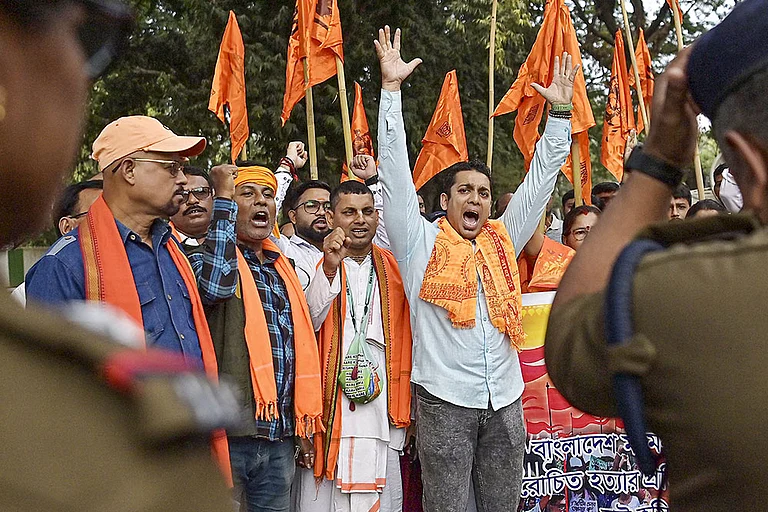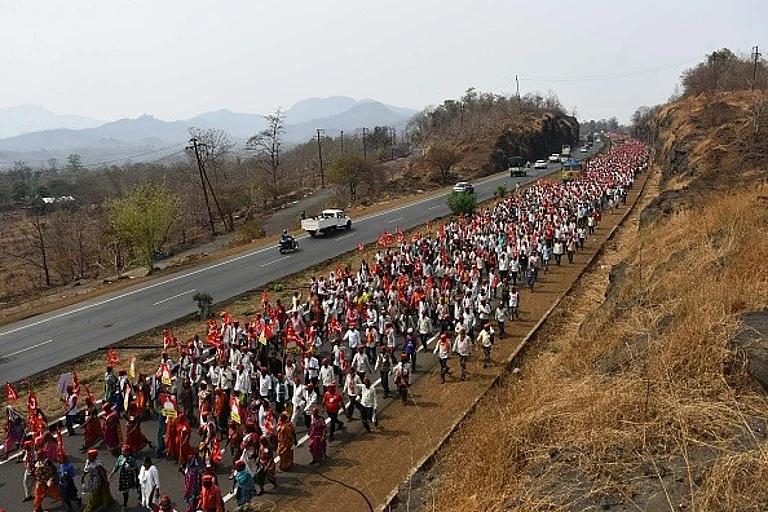‘Jiththe marange, uththe jitange…’ (fight till my last breath)
These were the last words of 22-year-old Shubhkaran Singh, just hours before he was shot dead at the Khanauri border between Punjab and Haryana where violence broke out on February 21. He said it to an old man whom he had requested for a glass of water while on way to the protest site: “Baba, mainu ika galasa pani di o (Baba, give me a glass of water).”
It was 11 am on the misty Wednesday morning when protesting farmers at the Khanauri and Shambhu borders gathered near the barricades, prepared to break through and march towards Delhi. While the police and security forces directed the farmers to step back, Shubhkaran along with hundreds of other protesters refused to back off. Clashes broke out soon after and a bullet hit the young farmer in the back of his neck.
Shubhkaran fell to the ground, unconscious. He was rushed to the nearby Patiala hospital but to no avail. He was declared dead.
***
Recalling bits and pieces from Shubhkaran’s last hours at the protest site, his friend and eyewitness Gurpreet Singh, 25, stares at the big yellow poster of his mate that hangs from the roof of an old, discoloured house in Baloh village, Bathinda district.
Consisting of three rooms, a rustic village kitchen, a concrete barn for his cattle, and a courtyard, this was the house that Shubhkaran had stayed in with his younger sister, father, and grand-aunt. Recently he had made some new additions to his nuclear family - a pet dog, Jimmy, and a hen.
The humble home in the farthest corner of large swathes of fields located about 100 km away from the Khanauri border where he breathed his last looks nothing like the palatial ‘kothis’ and palaces that some media outlets claim the ‘rich’ protesting farmers live in. Instead, his house and the stories within reveal how increasing poverty has driven farmers like him to the streets.
The boy was two years old when his parents separated, leaving him and his siblings in the care of a mentally unstable father. He was brought up by his paternal grandparents, relatives, and neighbours and never spoke of his mother. He would call his grandmother ‘Bibi’ and was the apple of her eye. When the grandparents passed a few years ago, a teenage Shubhkaran became the sole breadwinner of the family.
Gurpreet, who grew up with Shubhkaran, says that after passing his tenth exam, the latter quit his studies and joined his chacha (uncle), Charanjit Singh, in the fields. Although he said he did it for his love towards farming, Gurpreet believes it was also out of compulsion that came from the weight of his family’s long-standing debt. The family would cultivate around 10 acres of land on lease while they owned around 3.5 hectares.
Nearly six years back, he had taken a loan of nearly seven lakhs to meet the expenses of his elder sister’s marriage. He was repaying them in instalments and owing to this, he had to sell 1.5 acres of land. Yet, there is more to be repaid.
Despite his travails, Shubhkaran was the jolliest soul in the village, his friend recalls while patting Jimmy’s head, who remains restless and keeps looking for his master in his room. He keeps sniffing his master’s belongings - a cot that now stands deserted against the wall, a t-shirt that hangs from a corner peg, and a couple of worn pairs of boots. His shirt has a white stain. Shubhkaran’s paternal aunt, Paramit Kaur says that the boy loved “lassi, buttermilk, milk sweets”. His room is filled with old photographs of his family.
Shubhkaran’s grand-aunt remains inconsolable. Her eyes keep darting to his most valuable possession: a seed drill machine painted in green and yellow. Subhhkaran loved riding his tractor, which was parked in a neighbourhood yard. A black flag remains tied to the smokestack. It was his symbol of protest against the government.

Walking through the courtyard of Shubhkaran’s house, which now stands covered with white cloth in mourning, one can see the decay. The walls have started showing cracks. “He was trying his best with income to repair the house, feed his family, and repay the loan,” his neighbours say. A group of nearly 20 men and women sit together outside the house, sobbing and mourning the loss of the young man.

To pay tribute to Shubhkaran, his uncle, aunt, father, and sisters have been sitting in protest at the Khanauri border. They have not given their consent for post-mortem and they would not let the cremation happen until the Punjab Police files an FIR against the Haryana Police.
“He was one hard-working lad. He always stood in front whenever it came to fight for the rights of farmers. He was a born revolutionist in his ways. From farmers' protest 2020-21 to this one, he always prioritised securing the rights of farmers,” says Charanjit.

























